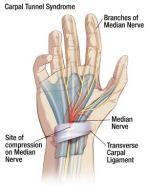- Home
- Work injuries
Work injuries and statistics
Okay I know work injuries and statistics can be boring and plus this study is from the government so what can you expect!
This is our tax money at work so get your money's worth!
BUT, seriously you may find it interesting to browse through the information below and see if your job and type of injury or illness you have fits with what they are finding.
Keep in mind that this is just for conditions that have been deemed to be work related.
This study does not take into account the millions of non-workrelated or personal cases of carpal tunnel syndrome or Musculoskeletal disorders (MSDs).
See Florida's interesting Work Comp Laws:
Florida Work Comp Laws Work Comp Claims
NONFATAL OCCUPATIONAL INJURIES AND ILLNESSES REQUIRING DAYS AWAY FROM WORK, 2006
Both the rate and the number of occupational injuries and illnesses requiring days away from work decreased from 2005 to 2006, according to the Bureau of Labor Statistics, U.S. Department Labor.
The 2006 rate was 128 per 10,000 workers, a decrease of 6 percent from 2005. There were 1.2 million cases requiring days away from work in private industry, which represented a decrease of 51,180 cases (or 4 percent).
Median days away from work—a key measure of the severity of the injury or illness—was 7 days in 2006, the same as the prior two years.
Key findings for 2006 nonfatal occupational injuries and illnesses requiring days away from work:
- Nursing aides, orderlies, and attendants, had 49,480 days away from work cases and a rate of 526 per 10,000 workers, which was more than four times the total for all occupations.
- Three other occupations with more than 40,000 cases had rates above 400 per 10,000 workers: construction laborers (488); laborers and freight, stock, and material movers (466); and heavy and tractor-trailer truck drivers (411).
- Men had a days-away-from-work rate of 143 per 10,000 workers; the rate for women was 106 per 10,000 workers.
- Four out of ten days away from work cases were sprains or strains. Approximately one in five of these were suffered by laborers and freight, stock, and material movers; heavy and tractor-trailer truck drivers; and nursing aides, orderlies, and attendants.
Musculoskeletal disorders (MSDs) accounted for 30 percent of the injuries and illnesses with days away from work, the same percentage as in 2005.
- Sprains and strains was the leading nature of injury and illness in every major industry sector (see table 5). These injuries decreased by 6 percent for total private industry in 2006 and for both goods-producing and service-providing industries. Trade, transportation, and utilities reported 157,380 sprains and strains, 33 percent of the total.
- The overall number of cases of carpal tunnel syndrome decreased by 21 percent. Workers on the job 5 years or more had a decrease of 27 percent for these kinds of illnesses.
- The part of the body most affected by work incidents was the trunk (including the shoulder and back) accounting for 34 percent of all cases. Cases involving the trunk decreased by 6 percent from 2005. Injuries and illnesses to the back made up 62 percent of the days-away-from-work cases involving the trunk.
- Floors, walkways, and ground surfaces were the source of injury or illness for 18 percent of all days-away-from-work cases. Worker motion or position accounted for 14 percent.
- Assaults and violent acts (by person) increased by 10 percent, with those to women increasing 21 percent to 10,400 cases. Sixty percent of the assaults and violent acts (by person) occurred in health care and social assistance and mainly involved assaults by health care patients.
- Injuries and illnesses due to repetitive motion decreased by 13 percent.
- Falls from a ladder decreased by 17 percent. Incidence rate and median days away from work due to injuries and illnesses by nature.
United States Department of Labor Bureau of Labor Statistics Washington, D.C. 20212 Technical Information: (202) 691-6170 USDL 07-1741 Media information: (202) 691-5902 For release: 10:00 A.M. EST Internet address: http://www.bls.gov/iif/home.htm Thursday, November 8, 2007
For More on
WORK RELATED INJURIES and CARPAL TUNNEL STATISTICS.
CTS Wrist Braces
Carpal tunnel causes
Carpal tunnel treatments
- Home
- Work injuries
Share this page:
Recent Articles
-
The carpal tunnel store
The carpal tunnel store has a huge selection of Medical Grade Products -
Anatomy of the carpal tunnel
The carpal tunnel anatomy is easy to understand if you remember we're dealing with a tunnel of sorts in your wrist. Learn the anatomy from a medical practitioner. -
Carpal tunnel prevention program
A carpal tunnel prevention program at the workplace may help employees from getting symptoms. Learn the best carpal tunnel prevention program on the web today.
Recent Articles
-
The carpal tunnel store
The carpal tunnel store has a huge selection of Medical Grade Products -
Anatomy of the carpal tunnel
The carpal tunnel anatomy is easy to understand if you remember we're dealing with a tunnel of sorts in your wrist. Learn the anatomy from a medical practitioner. -
Carpal tunnel prevention program
A carpal tunnel prevention program at the workplace may help employees from getting symptoms. Learn the best carpal tunnel prevention program on the web today.
